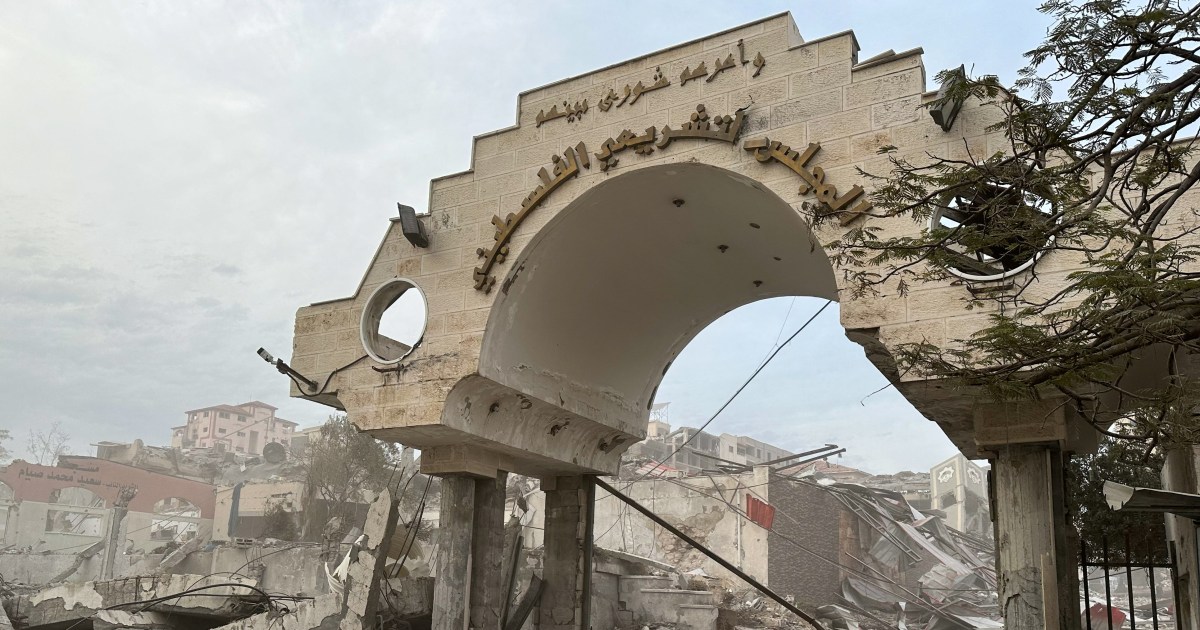
Three days into the four-day ceasefire between Israel and Hamas, the agreement appears to be in place and there are even talks of an extension. By Monday, 50 Israeli women and children were said to have been swapped for 150 Palestinian women and children, with brokers suggesting the deal could continue for several more days using the same formula.
Although the terms of the ceasefire are similar to those proposed by Qatari mediators in recent weeks, Israel’s War Cabinet insists they are the result of military pressure it has brought to bear on Hamas. But just a few weeks ago the government promised to forcibly release its hostages.
By agreeing to the terms of the release, Israel has shown that it can actually negotiate with Hamas, tacitly acknowledging that it is no closer to eradicating a group that has literally gone underground . If anything, Israeli actions have only made the group more elusive by devastating much of Gaza City and, by extension, the Hamas government’s institutions.
This was highlighted by the Israeli army’s siege and raid of al-Shifa hospital in Gaza, which failed to provide conclusive evidence that there was a Hamas-run command center there, as claimed. Instead, the operation against al-Shifa, which was disappointing at best, reinforced growing skepticism that Israel, with American support, can drive Hamas out of Gaza.
It is time for this reality to be recognized in the centers of power in Washington. The Biden administration must abandon unrealistic Israeli rhetoric about “ending Hamas” and embrace a more achievable political solution that takes into account the movement’s survival.
Rising deaths, changing public opinion
Evidence of Israel’s failing mission is the war’s bloody dividends. Their air and ground campaign, which Defense Minister Yoav Gallant promised would make Hamas “wipe off the face of the earth,” has so far failed to stop Palestinian militants’ attacks on Israeli positions or the almost daily volleys of rockets targeting Israeli cities.
Now, in the seventh week, the war has taken place killed More than 14,800 Palestinians, including about 6,100 children, destroyed neighborhoods and refugee camps and displaced more than a million people across the besieged strip.
Military analysts had claimed that the massive bombing would “soften” Hamas’ positions ahead of Israel’s ground invasion and limit the group’s ability to wage urban warfare in the densely built enclave. But in recent weeks, some U.S. officials, repeating reports in the Israeli media, began to admit that Israel’s relentless bombing campaign has failed to neutralize Hamas’ fighting capabilities.
Tolerance towards Israel’s actions also appears to be decreasing. On November 10, French President Emmanuel Macron became the first G7 head of state to call for a ceasefire. On November 24, the prime ministers of Spain and Belgium criticized Israel’s “indiscriminate killing of innocent civilians” and destruction of “Gaza society.” Spanish Prime Minister Pedro Sánchez even promised to unilaterally recognize Palestinian statehood.
In the US, the Biden administration is standing with its Israeli ally, but public opinion is rapidly shifting in favor of a permanent ceasefire. Mass demonstrations calling for a ceasefire have taken place across the country, and several major U.S. cities, including Atlanta, Detroit and Seattle, have passed resolutions echoing that call.
A recent poll found that only 32 percent of Americans believe their country should support “Israel” in its war on Gaza. Between his stance on the war and Israeli persecution, US President Joe Biden has left little clarity about the fact that his poll numbers have already fallen.
Public pressure may have encouraged not only Washington to push for the hostage exchange, but also the Israeli government to accept it. In addition to backlash from the families of hostages held by Hamas, reports suggest that Prime Minister Benjamin Netanyahu was pressured by Israeli security services and the military over the exchange.
Although Netanyahu, Gallant and former Defense Minister Benny Gantz, who sits in the current war cabinet, have all said the war against Hamas would continue, public pressure could cause them to back down from that intention as well.
The conflict is already taking a heavy toll on Israel’s economy, which is losing over a quarter of a billion dollars a day. It is expected to shrink by 1.5 percent in 2024 as fighting has hampered air travel and cargo and the recent hijacking of an Israel-linked ship could even threaten sea transport.
Then there are the tens of thousands of Israelis who have been displaced from areas along the Gaza and Lebanon borders, as well as all the families of the hostages, who are calling for everyone to be released. The ongoing ceasefire has shown that captured Israelis can be easily freed without firing a shot. This could help move Israeli public opinion – which has so far been overwhelmingly pro-war – towards a ceasefire.
Some Israeli analysts are already seeing a shift in favor of extending the ceasefire. In fact, continuing to negotiate would limit the country’s mounting economic losses and protect the lives of its prisoners and soldiers. The Israeli military has admitted the deaths of 70 soldiers since the ground invasion began.
The path to a ceasefire
Another problem with the Israeli government’s insistence on continuing the war is that it has not established an end result that is acceptable to its allies, including the United States.
In addition to the stated goal of “destroying” Hamas from Gaza, Israeli officials have also indicated that they want to expel the Palestinian population to Egypt’s Sinai Peninsula.
Pressure from Arab allies quickly eroded U.S. support for the idea, as well as for Israeli plans to claim indefinite “security responsibility” in Gaza. The Biden administration’s alternative — that the Ramallah-based Palestinian Authority take control of the enclave — was roundly rejected by both Israel and Hamas, which would remain the sole power broker in Gaza absent a renewed Israeli occupation.
Instead of acknowledging this, the US has stubbornly refused to make policy proposals that take Hamas’s survival into account. In this willful blindness, Washington is joined by a chorus of experts who continue to propose “solutions” that require the destruction of Hamas. But with memories of Afghanistan still fresh, U.S. policymakers should be well aware that eradicating a homegrown resistance movement is ultimately impossible.
It would be more possible to build on the example of the current hostage agreement, which has shown that both Israel and Hamas have the political will to negotiate. By working with mediators Qatar and Egypt, the U.S. can help shift the Gaza conversation beyond the disastrous “with us or against us” rhetoric that characterized America’s war on terror to discussions about a long-term ceasefire, That would have to be mediated by the political leadership of Hamas in exile.
There is a precedent for this. Recall that in December 2012, Israel allowed then-Hamas leader Khaled Meshaal to return to Gaza as part of a negotiated ceasefire after the eight-day war that year. Whether current exiled leader Ismail Haniyeh can moderate the position of his Gaza counterpart Yahya Sinwar, widely believed to have orchestrated the Oct. 7 attacks, will depend on Haniyeh’s ability to raise international aid and reconstruction funds .
Equally important will be a U.S. commitment to curbing Israel’s extremist policies, including the siege of Gaza and support for settler violence in the occupied West Bank and East Jerusalem. Once such de-escalation occurs, it will be critical for the international community to maintain its commitment to the reconstruction and development of the Gaza Strip and to alleviating the desperate conditions that contributed to the October 7 attacks.
Of course, no vision of a peaceful future can tolerate the murder of civilians. But finding a way out of the current crisis requires confronting the reality that the first seven weeks of this war have laid bare: there is no way to “wipe Hamas off the face of the earth” if not countless Palestinians – and Israelis – be used. lives with it.
If the long-term survival of Hamas defies the imagination, the risks of simply avoiding the idea are even more unimaginable. Although this does not appear to be widespread in Israel at the moment, some Israelis, such as former government adviser and Bar-Ilan University professor Menachem Klein, are convinced by the idea. Speaking to Al Jazeera after the first Israeli hostages were released, Klein acknowledged that it was “impossible to completely destroy Hamas by force.” The way forward, he argued, should involve the group in renewed negotiations over a Palestinian state.
Given the terrible suffering of the people of Gaza, the growing international and domestic pressure to end it, and the still looming prospect of a broader regional conflict, the United States can no longer insist that eliminating Hamas is the only way to end it war is.
The views expressed in this article are the author’s own and do not necessarily reflect the editorial stance of Al Jazeera.






Recent Comments